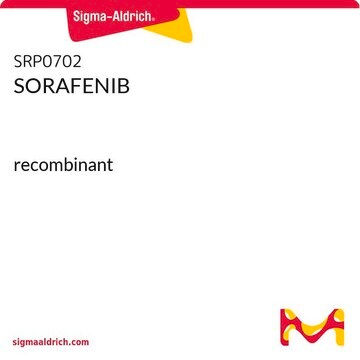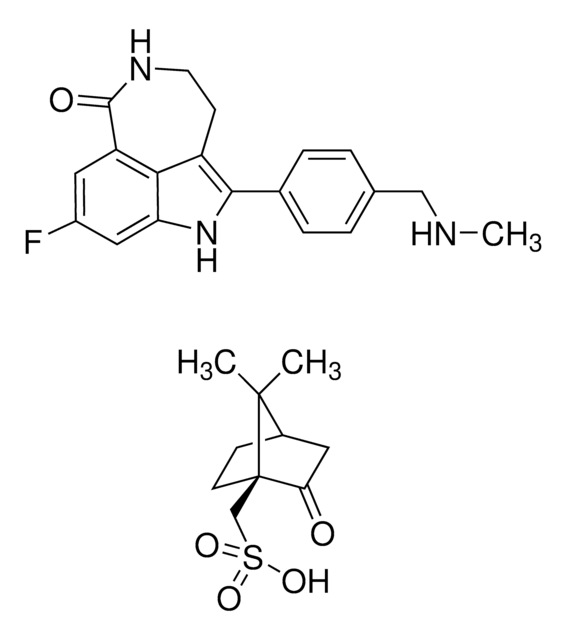E7781
Erastin
≥98% (HPLC), powder, antitumor agent
Sinónimos:
2-[1-[4-[2-(4-chlorophenoxy)acetyl]-1-piperazinyl]ethyl]-3-(2-ethoxyphenyl)-4(3H)-Quinazolinone
About This Item
Productos recomendados
product name
Erastin, ≥98% (HPLC)
Análisis
≥98% (HPLC)
formulario
powder
color
white to beige
solubilidad
DMSO: 5 mg/mL, clear (warmed)
temp. de almacenamiento
−20°C
cadena SMILES
CCOc1ccccc1N2C(=O)c3ccccc3N=C2C(C)N4CCN(CC4)C(=O)COc5ccc(Cl)cc5
InChI
1S/C30H31ClN4O4/c1-3-38-27-11-7-6-10-26(27)35-29(32-25-9-5-4-8-24(25)30(35)37)21(2)33-16-18-34(19-17-33)28(36)20-39-23-14-12-22(31)13-15-23/h4-15,21H,3,16-20H2,1-2H3
Clave InChI
BKQFRNYHFIQEKN-UHFFFAOYSA-N
Información sobre el gen
human ... hRas(3265)
mouse ... hRas(15461)
rat ... hRas(293621)
Descripción general
Aplicación
- as a positive control for inducing ferroptosis in hepatic stellate cell (HSC)
- to induce ferroptosis and in transferrin internalization assay of human fibrosarcoma HT1080 cells
- to induce ferroptosis of muscle-derived cell lines
Acciones bioquímicas o fisiológicas
Características y beneficios
Código de clase de almacenamiento
11 - Combustible Solids
Clase de riesgo para el agua (WGK)
WGK 3
Punto de inflamabilidad (°F)
Not applicable
Punto de inflamabilidad (°C)
Not applicable
Equipo de protección personal
Eyeshields, Faceshields, Gloves, type P2 (EN 143) respirator cartridges
Certificados de análisis (COA)
Busque Certificados de análisis (COA) introduciendo el número de lote del producto. Los números de lote se encuentran en la etiqueta del producto después de las palabras «Lot» o «Batch»
¿Ya tiene este producto?
Encuentre la documentación para los productos que ha comprado recientemente en la Biblioteca de documentos.
Los clientes también vieron
Artículos
Cell cycle phases (G1, S, G2, M) regulate cell growth, DNA replication, and division in proliferating cells.
Apoptosis regulation involves multiple pathways and molecules for cellular homeostasis.
Nuestro equipo de científicos tiene experiencia en todas las áreas de investigación: Ciencias de la vida, Ciencia de los materiales, Síntesis química, Cromatografía, Analítica y muchas otras.
Póngase en contacto con el Servicio técnico













